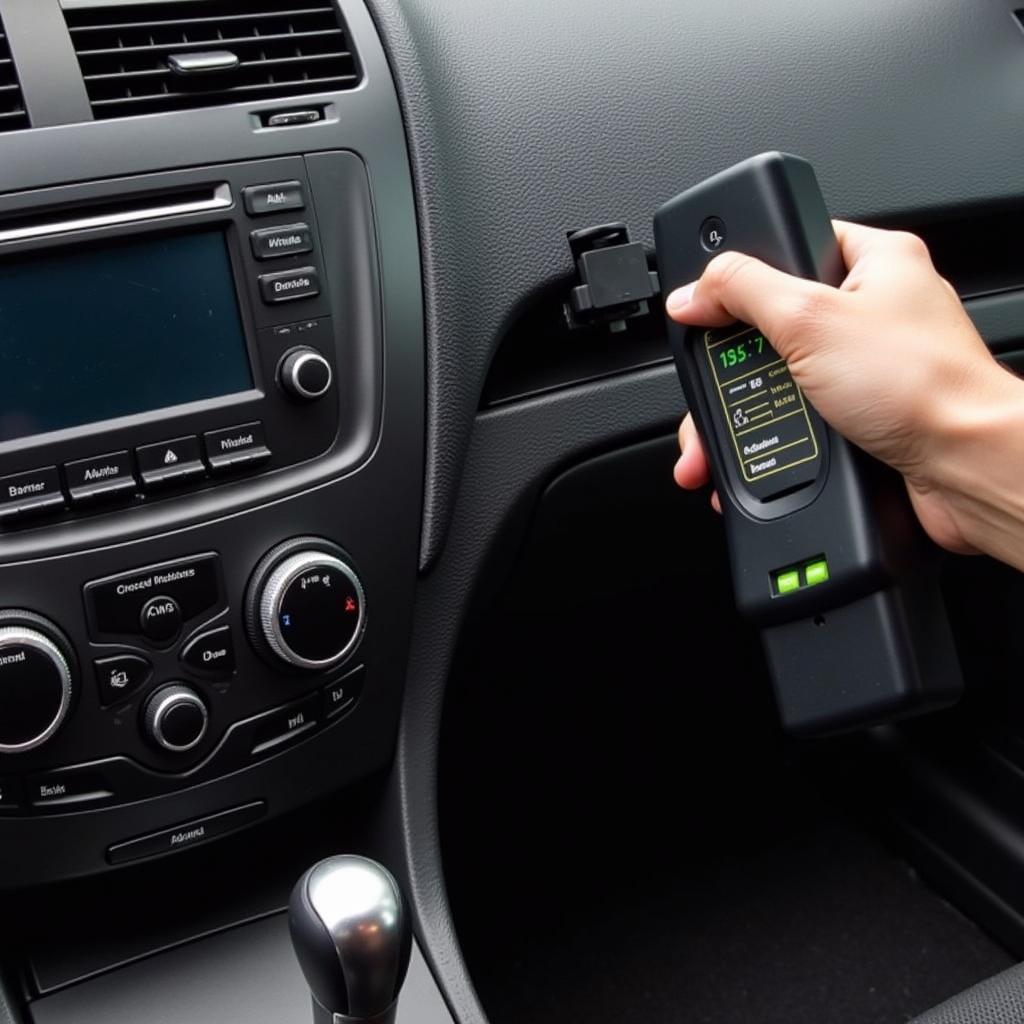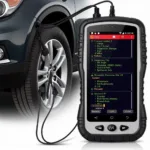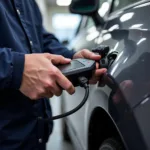Diagnostic scanners for cars have revolutionized the way we troubleshoot and maintain our vehicles. From identifying a simple check engine light to diagnosing complex transmission issues, these tools empower car owners and mechanics alike to understand what’s happening under the hood. Just a few decades ago, diagnosing car problems was a time-consuming and often expensive process. Now, with the availability of a wide range of diagnostic scanners, accessing and understanding vehicle data is easier than ever before. This comprehensive guide will explore the world of diagnostic scanners, from basic code readers to professional-grade tools, helping you make the best choice for your needs. After reading this, you’ll be well-equipped to choose the best diagnostic scanner for your car.
Understanding the Importance of Diagnostic Scanners for Cars
Why are diagnostic scanners so crucial in today’s automotive landscape? Modern vehicles are complex machines controlled by intricate electronic systems. When a problem arises, the car’s onboard computer stores a diagnostic trouble code (DTC). Diagnostic scanners for cars can retrieve these codes, providing valuable insights into the nature of the issue. This can save you time and money by narrowing down the potential causes and allowing for more targeted repairs. Think of it as having a direct line of communication with your car’s brain. Even for routine maintenance, diagnostic scanners can help track parameters like fuel efficiency and emissions, ensuring optimal performance. Are you ready to dive into the types of scanners available? Let’s explore!
After this initial explanation, consider a motor car diagnostic tool for quick and easy diagnosis.
Types of Diagnostic Scanners for Cars
OBD-II Code Readers: The Entry-Level Solution
OBD-II code readers are the most basic type of diagnostic scanner. They are designed to retrieve and display diagnostic trouble codes (DTCs). These affordable devices are perfect for car owners who want to understand why their check engine light is on. While they don’t offer advanced features like live data streaming, they are an excellent starting point for basic diagnostics.
Bluetooth OBD-II Scanners: Wireless Convenience
Bluetooth OBD-II scanners offer the convenience of wireless connectivity. These scanners transmit data to your smartphone or tablet, allowing you to access a wider range of diagnostic information. Many apps are available that work in conjunction with these scanners, offering features like live data graphing and advanced code definitions.
Professional-Grade Scanners: Advanced Diagnostics for Experts
Professional-grade diagnostic scanners are the tools of choice for mechanics and automotive technicians. They provide comprehensive diagnostic capabilities, including live data streaming, bi-directional control, and advanced coding functions. These scanners are typically more expensive but offer a level of detail and functionality that is essential for serious diagnostic work.
Choosing the Right Diagnostic Scanner for Your Needs
What should you consider when selecting a diagnostic scanner? First, define your needs. Are you a car enthusiast looking for basic troubleshooting capabilities, or are you a professional mechanic requiring advanced diagnostics? Your budget will also play a role in your decision. Consider the features you require, such as live data streaming, ABS diagnostics, and compatibility with specific car makes and models. If you’re looking for a specific car model like a Chrysler Ypsilon, consider a resource like diagnostic scanners for cars chrysler ypsilon.
Key Features to Look For
- Live Data Streaming: Monitor real-time sensor data.
- Bi-directional Control: Test components by activating them.
- ABS and Airbag Diagnostics: Diagnose issues with safety systems.
- Vehicle-Specific Coverage: Ensure compatibility with your car.
How to Use a Diagnostic Scanner
Using a diagnostic scanner is typically straightforward. Locate the OBD-II port, usually under the dashboard on the driver’s side. Connect the scanner, turn on the ignition, and follow the on-screen prompts or instructions provided by the companion app. Most scanners will allow you to retrieve DTCs, clear codes, and access live data. The panlong bluetooth obd2 car diagnostic scanner reader is a great example of a user-friendly option.
 Connecting a Diagnostic Scanner to a Car's OBD-II Port
Connecting a Diagnostic Scanner to a Car's OBD-II Port
The Future of Diagnostic Scanners for Cars
Diagnostic technology continues to evolve. We can expect to see even more sophisticated scanners with enhanced capabilities and greater integration with other automotive systems. Cloud-based diagnostics and predictive maintenance are also becoming increasingly prevalent. This allows mechanics to remotely diagnose issues and anticipate potential problems before they occur. For all car models, you might need a diagnostic fault finder for all cars.
“The ability to remotely diagnose car problems is a game-changer,” says John Smith, Senior Automotive Technician at XYZ Auto Repair. “It saves time and allows us to provide proactive service to our customers.”
“Diagnostic scanners are essential tools for any car owner or mechanic,” adds Jane Doe, Automotive Engineer at ABC Motors. “They provide valuable insights into the health of a vehicle and can significantly improve the efficiency of repairs and maintenance.”
Conclusion
Diagnostic scanners for cars are indispensable tools for anyone who wants to understand and maintain their vehicle. From simple code readers to advanced professional-grade scanners, there’s a tool to meet every need and budget. By understanding the different types of scanners and their capabilities, you can empower yourself to make informed decisions about your car’s maintenance and repairs. Investing in a diagnostic scanner can save you money and headaches in the long run. So, take control of your car’s health and explore the world of diagnostic scanners today!
FAQ
- What is an OBD-II port? The OBD-II port is a standardized connector that provides access to a vehicle’s diagnostic data.
- Can I use a diagnostic scanner on any car? Most modern cars (1996 and newer in the US) have an OBD-II port.
- Are there diagnostic scanners for specific car brands? Yes, some scanners offer enhanced functionality for specific makes and models.
- What is a DTC? A DTC is a Diagnostic Trouble Code that indicates a specific problem within the vehicle’s systems.
- How do I clear a DTC? Most diagnostic scanners have a function to clear codes after repairs have been completed.
- What is live data streaming? Live data streaming displays real-time sensor data, allowing you to monitor vehicle performance.
- Do I need a professional-grade scanner? If you’re a car enthusiast or DIYer, a basic scanner may suffice. Professionals require more advanced tools.
If you’re looking for MG specific diagnostic tools, check out mg car diagnostic tool.
Need help? Contact us via WhatsApp: +1(641)206-8880, Email: [email protected]. We have a 24/7 customer support team.

